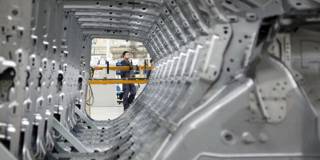Since last November, economists and the media alike have been hailing supply-side structural reform as the solution to all of China’s economic woes. But expansionary fiscal policy and accommodative monetary policy also have an important role to play in placing China on a more stable and sustainable growth path.
BEIJING – Since last November, economists and the media alike have been hailing supply-side structural reform as a groundbreaking solution to China’s economic woes. After all, the logic in China goes, demand-side policies, in the form of Keynesian stimulus measures, are useful only for resolving short-term and aggregate problems. Because China’s problems are long term and structural, the country should be focused on supply-side structural reform, even if it means accepting slower GDP growth. Is this the right approach?

BEIJING – Since last November, economists and the media alike have been hailing supply-side structural reform as a groundbreaking solution to China’s economic woes. After all, the logic in China goes, demand-side policies, in the form of Keynesian stimulus measures, are useful only for resolving short-term and aggregate problems. Because China’s problems are long term and structural, the country should be focused on supply-side structural reform, even if it means accepting slower GDP growth. Is this the right approach?